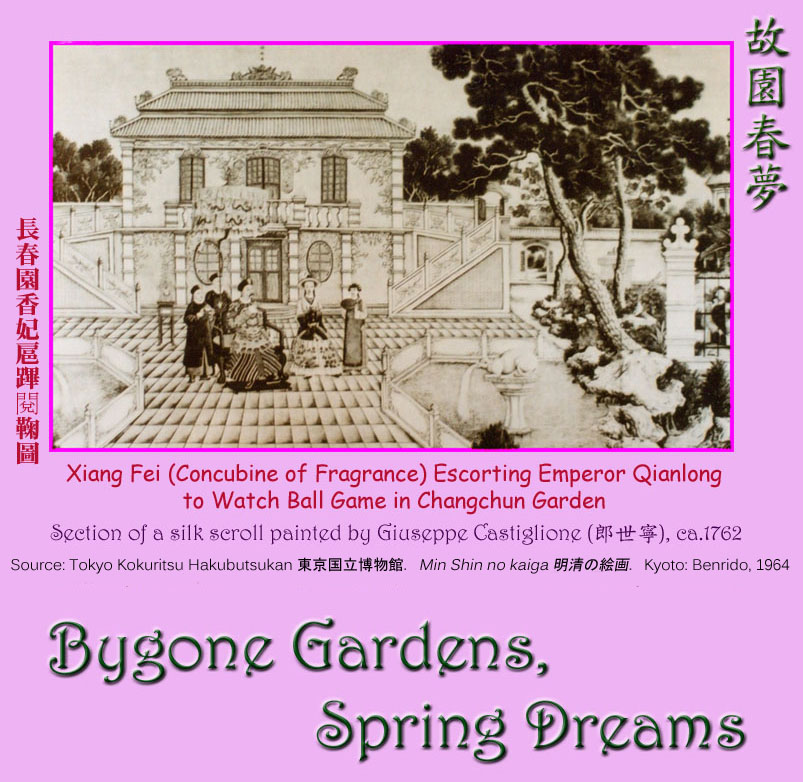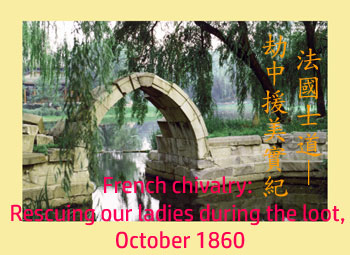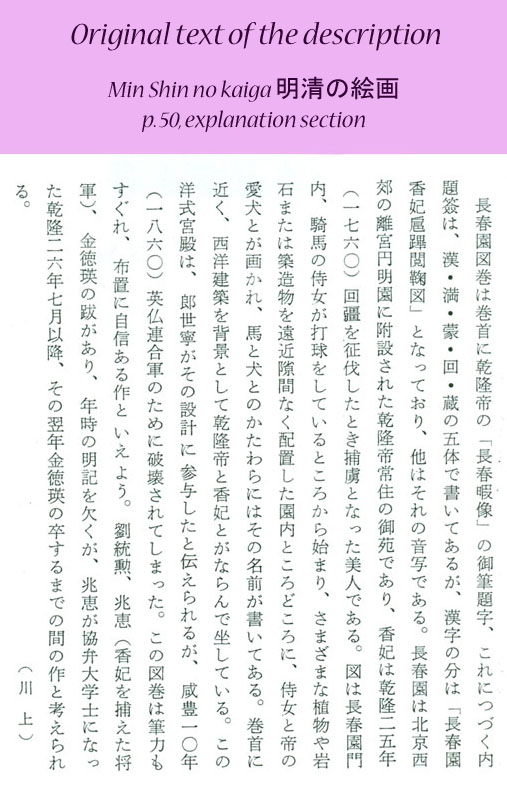


With the emperor and his concubine enjoying leisure in Changchun Garden which is one of three gardens constituting the Yuan Ming Yuan garden complex, we have a rare glimpse of Yuan Ming Yuan as it actually has been, full of life with people in living environs. Note that Xiang Fei seemingly is dressed like a Western lady. This colour painting scroll measures 67.5 x 531.0 cm (26.6 x 209.1 in), and is probably from a private collection. The Gardener translated the description in the painting album Min Shin no kaiga = Paintings of Ming & Ch‘ing Dynasties as follows:
At the beginning of The Scroll of Changchun Garden [Changchun yuan tu juan 長春園圖卷] is Emperor Qianlong's calligraphy "Leisure Scene in
Changchun" [Changchun xia xiang 長春暇像]. Following this are caption titles in the five scripts of Chinese, Manchu,
Mongolian, Arabic and Tibetan. The Chinese title reads "Xiang Fei Escorting the Emperor Watching ju in Changchun
Garden" [Changchun yuan Xiang Fei hu bi yue ju tu 長春園香妃扈蹕閱鞠圖], the other scripts being transliterated titles
from the Chinese. Changchun Garden, part of the Yuan Ming Yuan detached palace in the west suburb of Peking,
is the imperial garden residence where Emperor Qianlong frequently lives. Xiang Fei is the beauty captured during
the conquest of Huijiang [now part of Xinjiang Uyghur Autonomous Region] in the 25th year of Qianlong's reign (1760).
The painting begins with some court maids on horseback playing a ball game inside the gate of Changchun Garden.
In the garden, among the various plants, rocks and architectural structures arranged without any perspective of
distance are court maids with the emperor's pet dogs. The names of the
horses and dogs are written beside them. Near the beginning of the painting, with a Western building as the background,
Emperor Qianlong and Xian Fei are sitting side by side. It is said that Giuseppe Castiglione [painter of this scroll]
participated in the design of this Western style building1, which however was damaged [burnt down] by the joint
army of Britain and France in the 10th year of the reign of Emperor Xianfeng (1860). This painting is apparently executed
with excellent brush strokes and the layout is presented with confidence. On the painting there are postscripts by
Liu Tongxun, Chaohui (the general who captured Xiang Fei) and Jin Deying. While there is no clear indication of dates,
it may be said that this is a work done between the Seventh Moon [or perhaps July] of the 26th year of Qianlong's reign [1761], when Chaohui became
Associate Grand Scholar, and the following year when Jin Deying passed away. (Kawakami [writer of this description])

